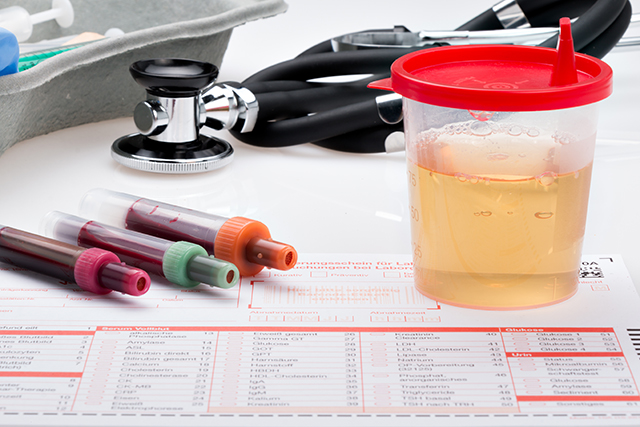Download: PSA Test Fact Sheet (PDF)
What is the PSA test?
Prostate-specific antigen, or PSA, is a protein produced by normal, as well as malignant, cells of the prostate gland. The PSA test measures the level of PSA in a man’s blood. For this test, a blood sample is sent to a laboratory for analysis. The results are usually reported as nanograms of PSA per milliliter (ng/mL) of blood.
The blood level of PSA is often elevated in men with prostate cancer, and the PSA test was originally approved by the FDA in 1986 to monitor the progression of prostate cancer in men who had already been diagnosed with the disease. In 1994, the FDA approved the use of the PSA test in conjunction with a digital rectal exam (DRE) to test asymptomatic men for prostate cancer. Men who report prostate symptoms often undergo PSA testing (along with a DRE) to help doctors determine the nature of the problem.
In addition to prostate cancer, a number of benign (not cancerous) conditions can cause a man’s PSA level to rise. The most frequent benign prostate conditions that cause an elevation in PSA level are prostatitis (inflammation of the prostate) and benign prostatic hyperplasia (BPH) (enlargement of the prostate). There is no evidence that prostatitis or BPH leads to prostate cancer, but it is possible for a man to have one or both of these conditions and to develop prostate cancer as well.
Is the PSA test recommended for prostate cancer screening?
Until about 2008, some doctors and professional organizations encouraged yearly PSA screening for men beginning at age 50. Some organizations recommended that men who are at higher risk of prostate cancer, including African American men and men whose father or brother had prostate cancer, begin screening at age 40 or 45. However, as more was learned about both the benefits and harms of prostate cancer screening, a number of organizations began to caution against routine population screening. Most organizations recommend that men who are considering PSA screening first discuss the risks and benefits with their doctors.
Currently, Medicare provides coverage for an annual PSA test for all Medicare-eligible men age 50 and older. Many private insurers cover PSA screening as well.
What is a normal PSA test result?
There is no specific normal or abnormal level of PSA in the blood, and levels may vary over time in the same man. In the past, most doctors considered PSA levels of 4.0 ng/mL and lower as normal. Therefore, if a man had a PSA level above 4.0 ng/mL, doctors would often recommend a prostate biopsy to determine whether prostate cancer was present.
However, more recent studies have shown that some men with PSA levels below 4.0 ng/mL have prostate cancer and that many men with higher levels do not have prostate cancer.1 In addition, various factors can cause a man’s PSA level to fluctuate. For example, a man’s PSA level often rises if he has prostatitis or a urinary tract infection. Prostate biopsies and prostate surgery also increase PSA level. Conversely, some drugs—including finasteride and dutasteride, which are used to treat BPH—lower a man’s PSA level. PSA level may also vary somewhat across testing laboratories.
Another complicating factor is that studies to establish the normal range of PSA levels have been conducted primarily in populations of white men. Although expert opinions vary, there is no clear consensus regarding the optimal PSA threshold for recommending a prostate biopsy for men of any racial or ethnic group.
In general, however, the higher a man’s PSA level, the more likely it is that he has prostate cancer. Moreover, a continuous rise in a man’s PSA level over time may also be a sign of prostate cancer.
READ FULL ARTICLE
![]() From National Cancer Institute
From National Cancer Institute
